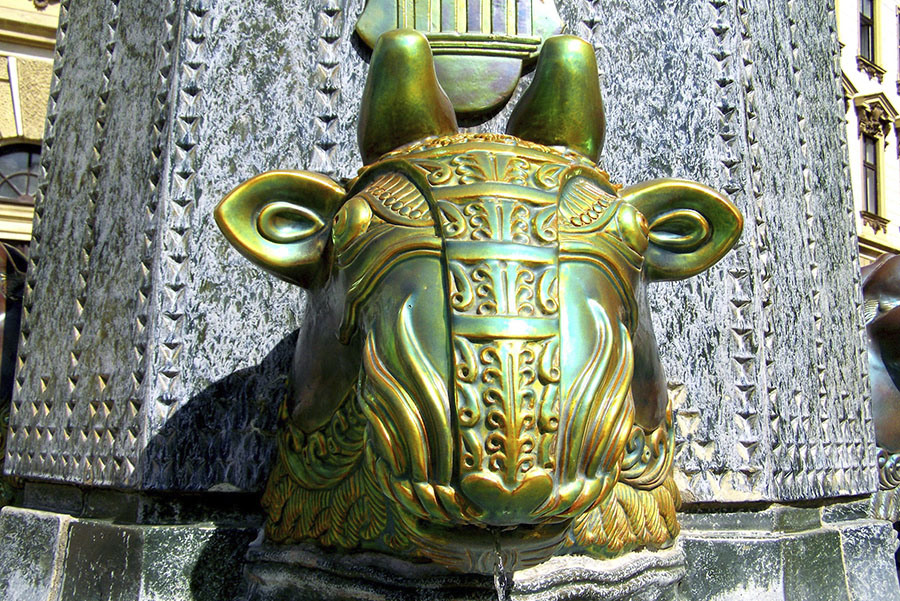FACTS
Claimants called “ZSOLNAY”, descendants of Mr. ZSOLNAY, founder of the famous Hungarian porcelain brand “ZSOLNAY”, are owners of European word mark
ZSOLNAY
registered in classes 17, 18, 20, 25 and 45, but the mark is not used by them in their market activity.
The defendant, a trading company, uses the same mark on clothing as well as on the internet in relation with its clothing collections. An intervening party named ZSOLNAY ceramics factory, intervened for the defendant. The intervening party company is the manufacturer of the famous Zsolnay porcelain (tableware, porcelain figurines etc.) and owner of several “ZSOLNAY” trademarks protected in class 21 and some other classes but not in class 25. The defendant and the intervening party agreed that the defendant can use the mark “ZSOLNAY” for clothing, in exchange for license fee. The claimants were aware of the defendant’s activity.
The claimants sued the defendant for trademark infringement. The defendant filed counterclaim. They held that the claimant was in bad faith when applying for the European mark.
The Metropolitan Tribunal, as a European Tribunal of first instance rejected the infringement claim. On the other hand, the counterclaim was successful. The Tribunal stated that the mark was reputed, and the claimants filed their EU trademark application in bad faith, as they were aware that the mark of the intervening party -had reputation, and they filed the same mark without permission of the intervening party.
The Metropolitan Court of Appeal, as European Court for Trademarks as second instance approved the judgement of the Tribunal. The court added that the reputed mark “ZSOLNAY” of the intervening party had been used since the 19th century. The claimants’ bad faith was also proved, as they were aware of the use of the mark “ZSOLNAY” of the intervening party on the market, as the latter protested the claimants’ application; the claimants’ behaviour was unfair.
The claimants filed a request for revision with the Supreme Court, but this was rejected. The court referred to the standard case law, which does not allow revision of statement of facts, namely how the lower instances rendered judgement on these. In respect of the counterclaim the lower instances had to judge whether the European application for the reputed mark “ZSOLNAY” was filed in bad faith by the claimants. As a result, the claimant’s cited EU trademark was invalidated.
The lower instances were right stating that the mark “ZSOLNAY” was reputed, it had been used for about a hundred years and obtained even the title “Hungaricum” (a value worthy of distinction, which is the peak achievement of Hungarians with its characteristics, uniqueness, specialness, and quality).
In respect of the goods the court stressed that a reputed mark confers protection even on goods that are not recorded in the Trademark Registry. This is true also in the present situation, where the mark of the intervening party was not recorded, as a result the lower instances had to examine whether the claimants were aware of or should have known that the mark had been a property of the 3rd company, and that they were unfair having filed the same mark. Relating to this question the opinion of the lower instance is convincing and the court agreed with their conclusion.
In this respect the court said that the claimants were aware of the goods in respect of which the reputed mark of the intervening party is registered (Pfv.IV.20.602/2019).
P.S. I express my thanks to Bérczes Law Office, representative of the defendant, who provided me with a copy of the Supreme Court’s judgement. The study of this allowed me a much better understanding of the case.
COMMENTS
1. The European Material and Trademark Law is eclectic. It contains elements of German, French, British etc. rules. This is even more so for the procedural law: jurisdiction is divided between European and national competencies.
The hereabove reported case is an example. Namely, the EU General Court has competence for lawsuits, except for infringement suits for which the national courts of the claimant are competent. To be more exact: every member state operates one or more European trademark courts. In Hungary this is the Metropolitan Tribunal, as European Trademark Court of First Instance, and the Metropolitan Court of Appeal as Trademark Court of Second Instance.
The same is valid in respect of the procedures of counterclaims in a trademark suit, for which the court of the infringement case is competent. Such a rule on counterclaim was unknown in the former German (Austrian, Hungarian etc.) trademark laws.
2. It is remarkable that the claim was rejected: claimant’s European mark was annulled.
Counterclaim can be a dangerous weapon in the hand of the defendant. In the reported case the defendant’s counterclaims succeeded, because the intervention of the owner of the reputed mark was object of the proofs. When filing the claim, the claimant probably did not think that the owner of the mark would intervene. But at least after the Tribunal’s judgement they ought to have realised that they had no chances.
3. Protection of a reputed mark even if this is not registered was previously unknown in Hungarian Trademark Law, this was introduced only by harmonization with the European Trademark Law. In this respect the European Trademark Directive provides in Sec. 5 (2) that goods and services which are not like those for which the trademark is registered, where the latter has a reputation in the member state and where use of the sign without due cause takes unfair advantage, are detrimental to the distinctive character or the repute of the trademark.
The mark “ZSOLNAY” meets these conditions: in Budapest both the roof of world-famous Matthias church, ( where formerly kings had been crowned), and the Museum of Fine Arts have been covered by ZSOLNAY ceramics. Moreover, the fact that the name “ZSOLNAY” is recorded in the list of Hungaricums, serves as evidence that class 25, in which this mark is not recorded for the intervening party, deserves trademark protection.
4. Bad faith activity has been prohibited for 2000 years. The rule on mala fides in Roman Law had existed long before trademark law was construed by French lawyers.
Though the reference to bad faith of the claimants in the case hereabove reported is just the cherry on the top of the cake. I believe that even without this reference the judgements would have been convincing. The counterclaim alone, based on the objective circumstance of the reputation of the mark “ZSOLNAY”, would have been sufficient.
In-house Counsel
Doctor of the Hungarian Academy of Sciences
Partner







